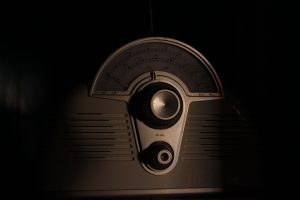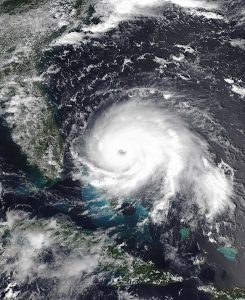Journalistic styles are heavily influenced by news mediums
BY KIKI WALLICK
Published October 8, 2019.
The medium that a news story is written in affects the journalistic style. These mediums restrict certain aspects of storytelling while also providing the best possible way to share stories.

How do you prefer your morning news—by the window or at the kitchen counter? Lounging by the window allows you to start your day with the outside world, observing the hustle and bustle of the morning while you catch up on Trump’s America; on the other hand, sitting at the kitchen counter gives you a more intimate time with the news as you are able to solely focus on the stories.
Much like how the setting of your morning news intake changes your focus on the news, the mediums in which your news stories are written impacts the journalistic style.

According to Dear and Scott (2015, 102), “the means by which a story is told affects what the story can be.” With print stories, the reader is able to skim the story, reread sections at any time, and use visual aids such as images and graphs to get a more complete picture. When writing print stories, the author can thoroughly explain components of the story as readers have the opportunity to reread the text. Furthermore, the print medium allows for the handling of more complex ideas as these mediums are not constricted by length. Additionally, print stories have a higher level of mobility as they can be stored and carried around throughout the day.

In relation to its counterparts, radio news stories present details that others simply cannot. Radio stories add audio to the news phenomenon. The actual experience, then, is communicated through texture and context (Dear and Scott 2015). Radio stories are in competition with other efforts as they allow for multitasking—this means that when writing these stories, the author must be certain to be concise and direct. Additionally, radio stories must be written with clarity as the stories cannot be replayed as easily as print stories are reread.

Despite their differences, print and radio stories are similar in that they engage with our senses to tell a complete story. Print mediums employ visual aids and descriptive text to tell the story while the radio medium engages with our audio senses.
By looking at recent news stories of the cleanup in the Bahamas following Hurricane Dorian, I was able to see how the two mediums can share the same story in different styles.

In “They Survived Hurrican Dorian. Their Community Will Not,” Lai et al (2019) used striking images of the destruction of Sand Banks, a small community on Great Abaco Island, to emphasize the great obstacle of rebuilding after the disaster. Additionally, the authors were able to go into detail about specific challenges communities face in rebuilding due to government restrictions. The history of rebuilding after disasters is also provided which gave insight into the perspective of those affected.
Similarly, the radio story “Bahamian Business Owners Debate Whether to Rebuild After Hurricane Dorian” reports on rebuilding efforts in the Bahamas. Beaubien (2019) provides insights on the current state of affairs in the Bahamas with an interview with a local community official and shop owner. This interview, along with the sounds of the hustle and bustle of the community, add more of the human element to the story. Hearing both the devastation and hope in their voices allowed for a more personal connection with the community affected.
Sources
Beaubien, J. 2019. Bahamian Business Owners Debate Whether to Rebuild After Hurricane Dorian. National Public Radio. Accessed October 8, 2019.
Lai, R. K.K., D. Watkins, N. Koppel, and A. Singhvi. 2019. They Survived Hurricane Dorian. Their Community Will Not. New York Times. Accessed October 8, 2019.
Scott, F., and J. Dear. 2015. The Story Changes with the Medium. Pages 101-114. The Responsible Journalist: An Introduction to News Reporting and Writing. Oxford U Press, New York, New York, USA.
Image credits
A cool place to read the morning news by Lomo LCA+ is licensed under CC BY-NC 2.0.
Newspapers by Gary Thomson is licensed under CC BY-NC-ND 2.0.
Radio antiga by Jordi HD is licensed under CC BY-NC 2.0.
Radio by Ken Yee is licensed under CC BY-NC-ND 2.0.
Add a Comment
You must be logged in to post a comment.